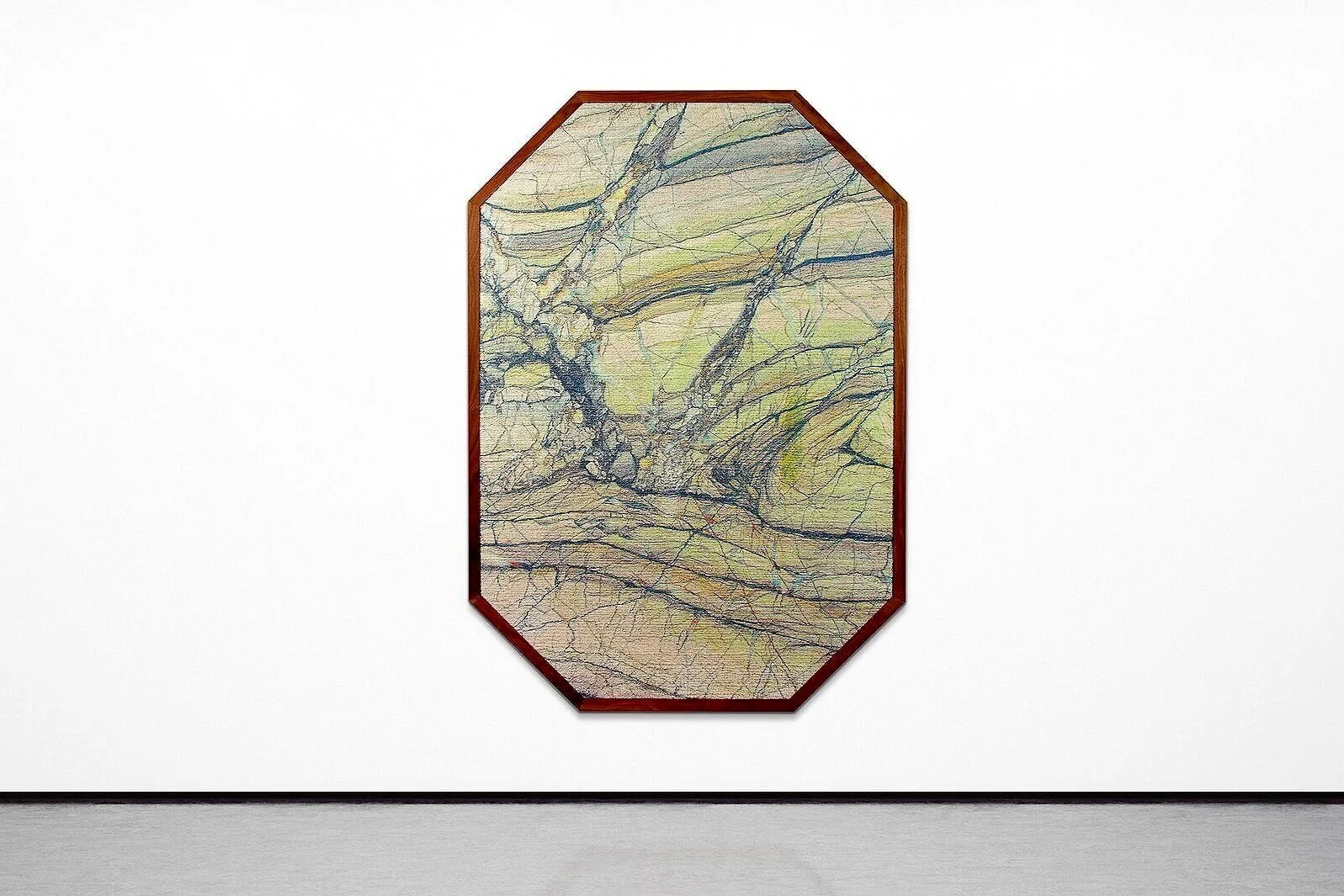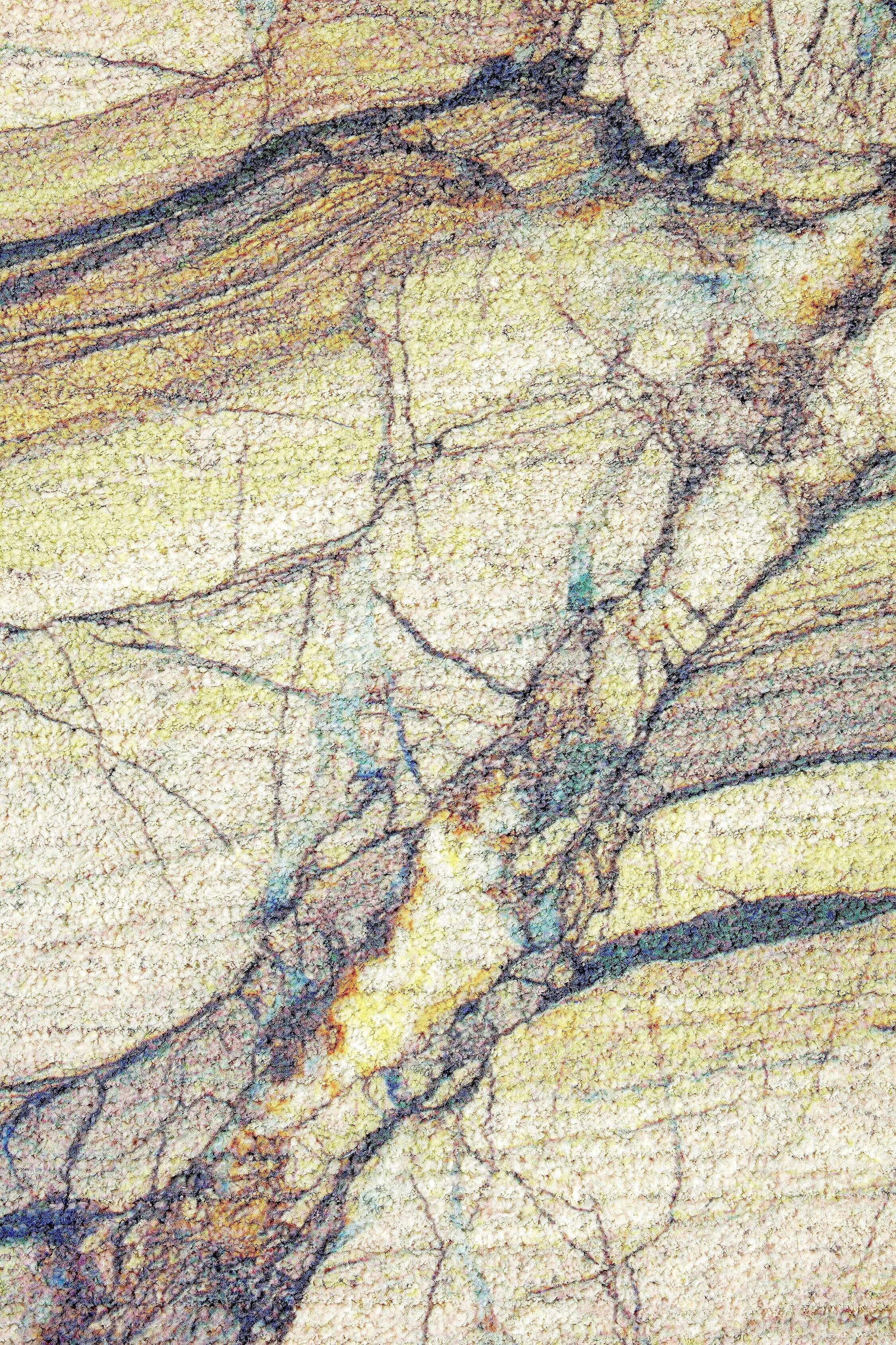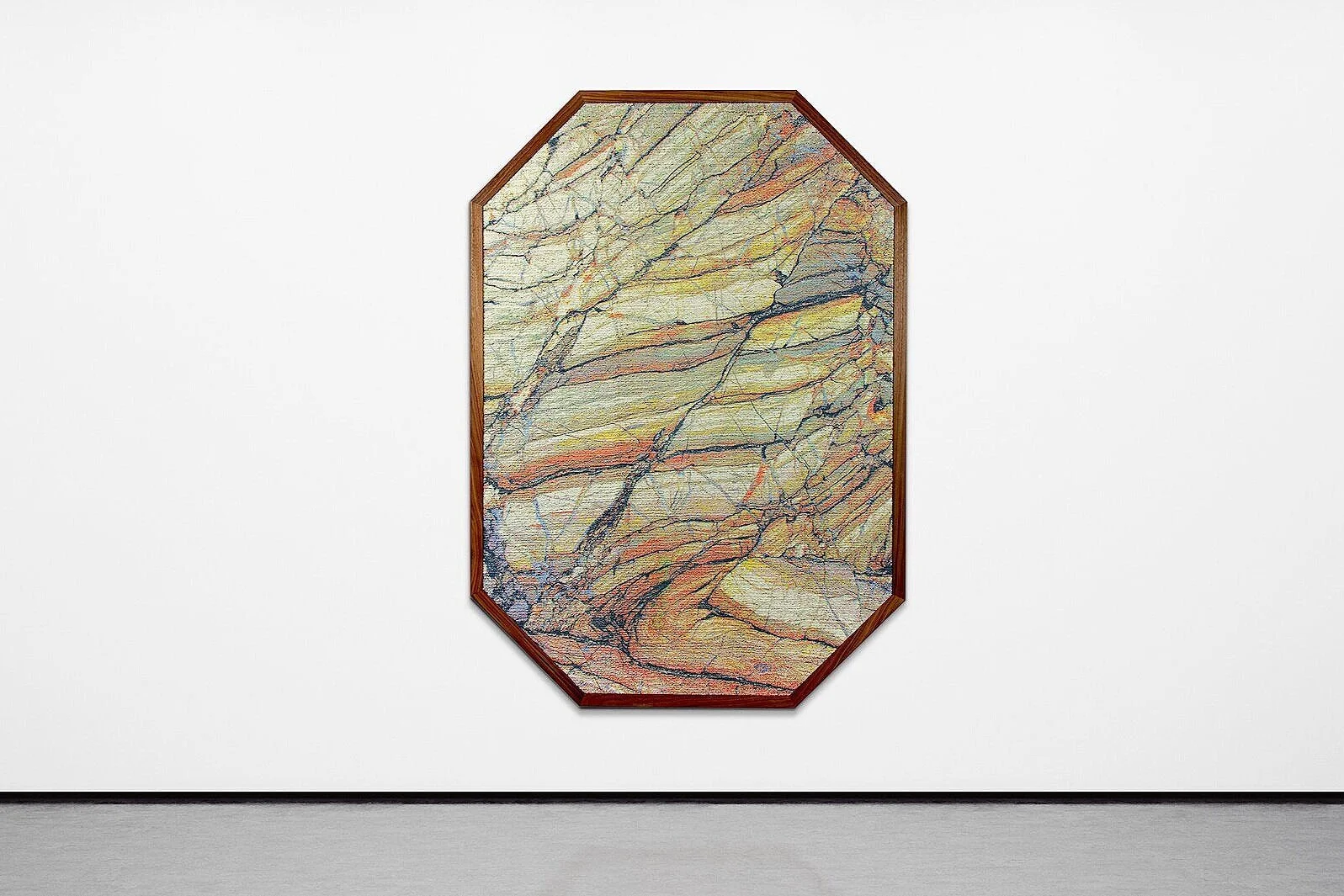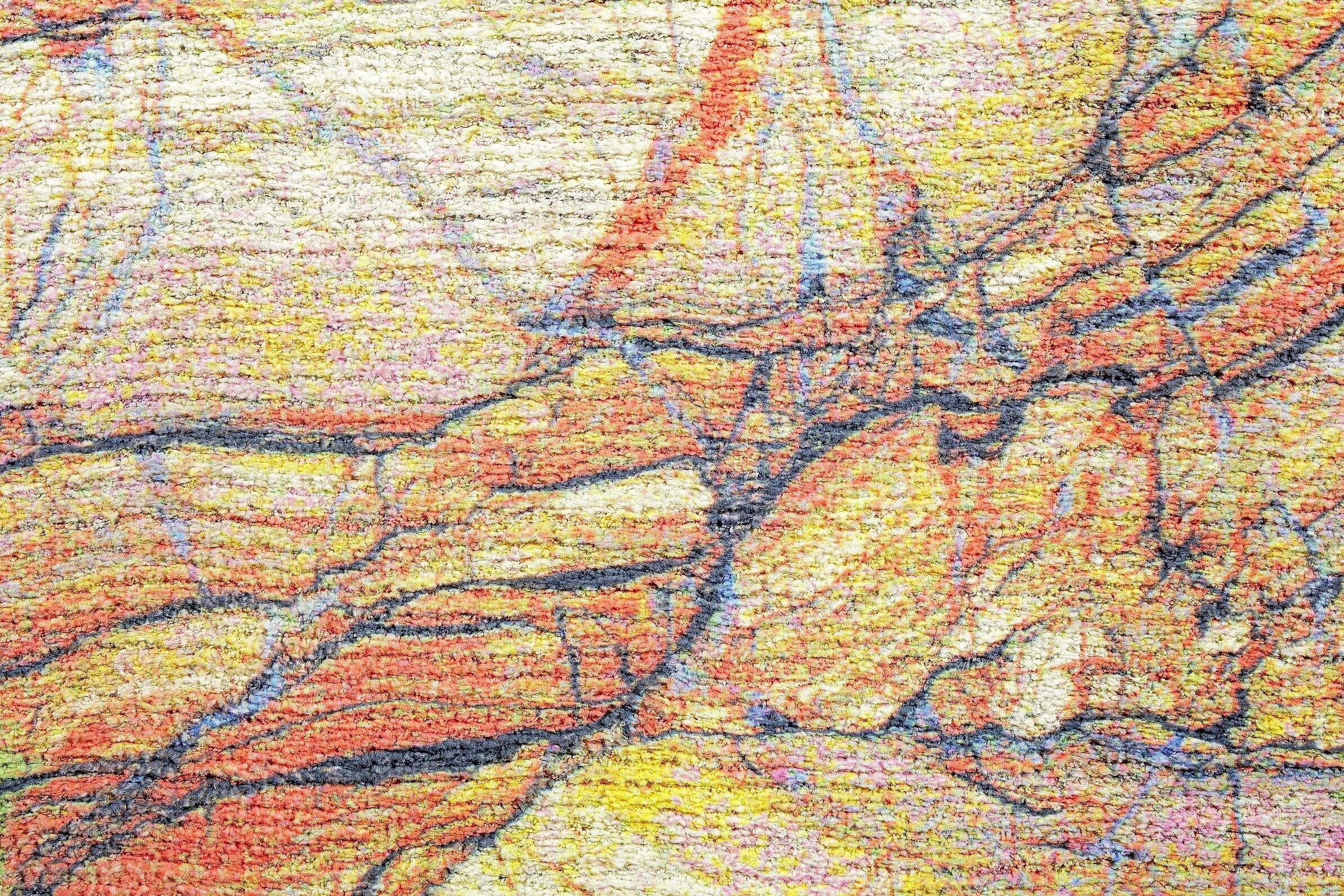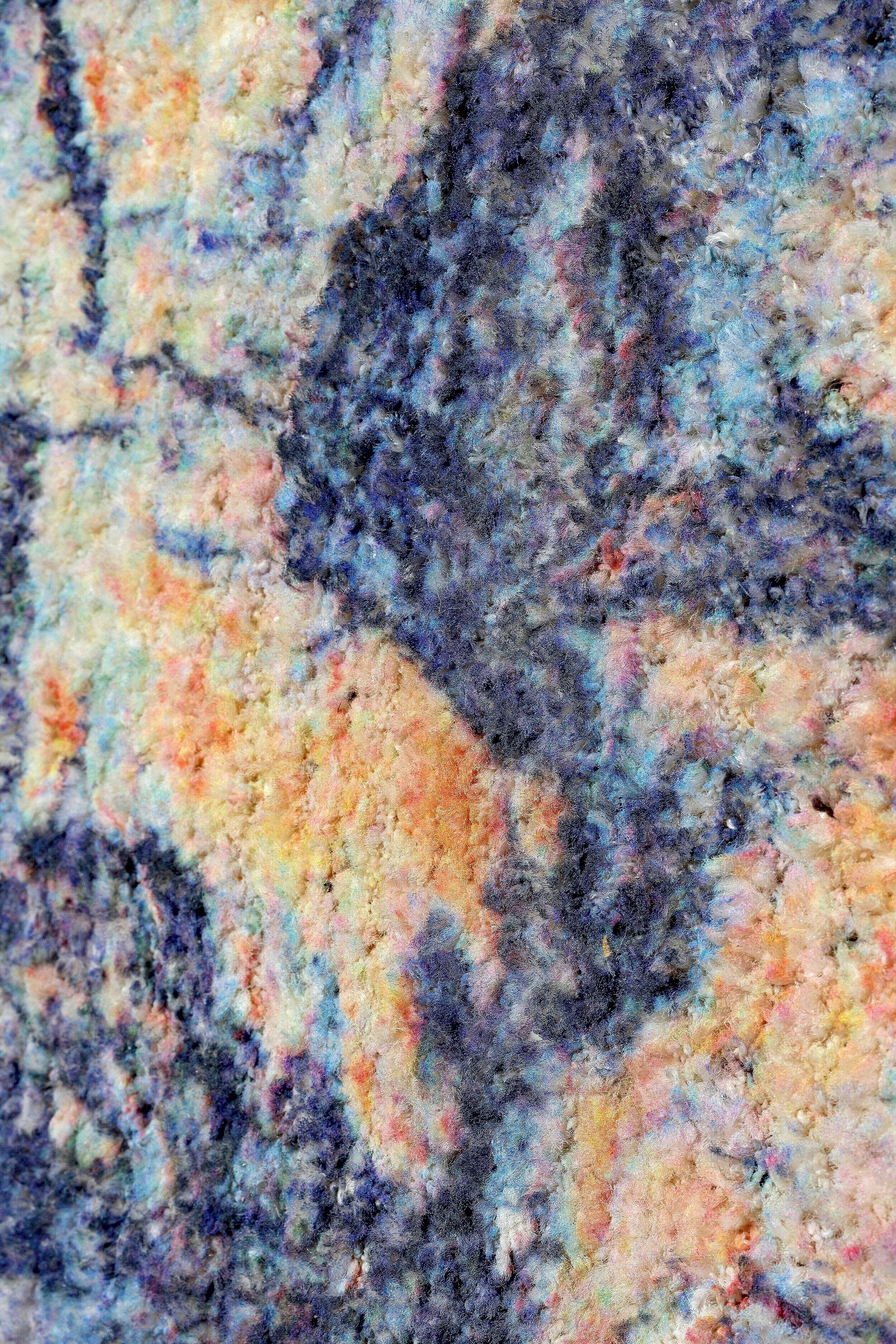The Cosmic Fragments
2021 - 2022
In this series The Cosmic Fragments a visual chronicle of colours, forms, contours and textures dominate numerous graphic compositions. The works no longer align with earlier series’ of landscape-orientated motifs but, rather, they formulate a more diverse and impressionistic narrative. Delving into a thematic response - and a retraction of representational content - this body of work ushers in a newfound technique whereby each hand-made brush stroke becomes indistinguishable amongst the flurry of fabric and print.
Employing image-editing software, digitally generated patterns and pictorial elements are first printed on a recycled polypropylene and polyester mix fabric, before layers of aquarelle and oil pastels add texture with intensity. The combination of a digital substratum with extemporaneous inclusions by hand welcomes the viewer to seek out varietal compositional complexities within the framework of each work as well as to seek variances in the shared abstracted visuals which are consequently laid bare.
-
As a side note: the title ‘The Cosmic Fragments’ refers to the visual re-imagination and contextual interpretation of Heraclitus' philosophical utterances whose subject is the world as a whole rather than man and his part in it. This series is named after G.S. Kirk's philosophical paper that examines the fragments of Heraclitus' philosophical cannon.
Professor Kirk's 1954 work marks a significant advance in the study of Presocratic thought. Heraclitus was famous for his insistence on ever-present change as being the fundamental essence of the universe, as stated in the famous saying, "No man ever steps in the same river twice". This position was complemented by his stark commitment to a unity of opposites in the world, stating that "the path up and down are one and the same". Through these doctrines Heraclitus characterised all existing entities by pairs of contrary properties, whereby no entity may ever occupy a single state at a single time.

